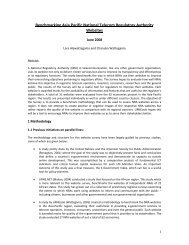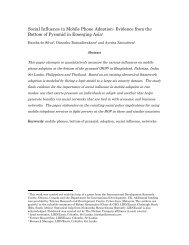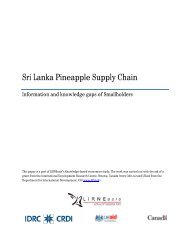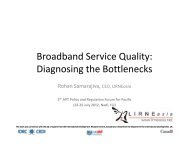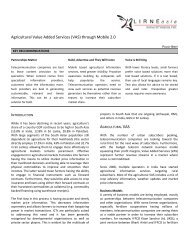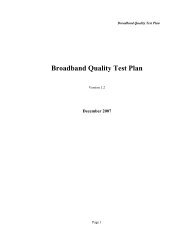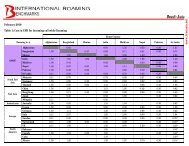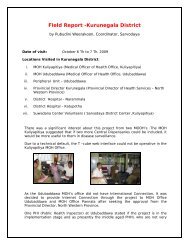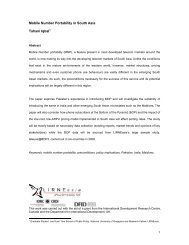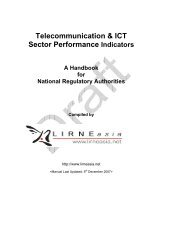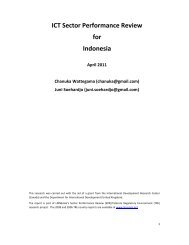Teleuse@BOP3: A Qualitative Study - LIRNEasia
Teleuse@BOP3: A Qualitative Study - LIRNEasia
Teleuse@BOP3: A Qualitative Study - LIRNEasia
Create successful ePaper yourself
Turn your PDF publications into a flip-book with our unique Google optimized e-Paper software.
Philippines<br />
The research in Philippines was carried out in the metro Manila city and Pampanga, San Fernando near Manila.<br />
Manila is the second most populous city in the Philippines, employing large local populations at fairly low salaries in<br />
labor intensive sectors like chemicals, textiles, clothing, electronic goods, food and beverages and tobacco products.<br />
The city experiences substantial labor migration, receiving the largest amount of remittances of overseas Filipino<br />
workers reaching $14.4 billion in 2007, which constituted 10% of Philippines’s GDP. Manila being largely a service<br />
industry hub faces the challenge of creating new employments at the BOP and this in turn results in substantial<br />
instances of urban poverty.<br />
Pampanga is one of the prime agricultural processing centers of Central Luzon. It is one of the more prosperous rural<br />
regions in Philippines making it an interesting research location to understand more sophisticated mobile 2.0 usage<br />
possibilities amongst the Filipino BOP. The region has an interesting mix of sources of livelihood from agriculture to<br />
newer manufacturing, construction utility (electric, gas and water), transportation and communication, making it<br />
possible to look into profession based Mobile 2.0 services that can assist these individuals in their livelihood.<br />
Sri Lanka<br />
In Sri Lanka, the research was carried out in the Kandy urban area and Katudeniya village in the Matale district.<br />
Kandy’s distance from Colombo reduces the impact of the economic concentration and strength of Colombo and<br />
makes it more representative of remaining Sri Lanka. It has a more prominent agricultural base which is not<br />
increasing economically. It is the hub of migration from poorer districts in the east and unlike in Colombo where 6%<br />
of the household remains in poverty, in Kandy, 25% of the household remains below this line, according to the Sri<br />
Lankan Department of Census and Statistics.<br />
Katudeniya’s agro-forestry based ecology makes new employment opportunities difficult. It is a zone prominent for<br />
the rising number of its female migrants largely due to the plantation economy of this region. The region is<br />
undergoing infrastructural development which is expected to enable its residents to be in greater connectivity with the<br />
urban centre of Matale and benefit from it.<br />
27




